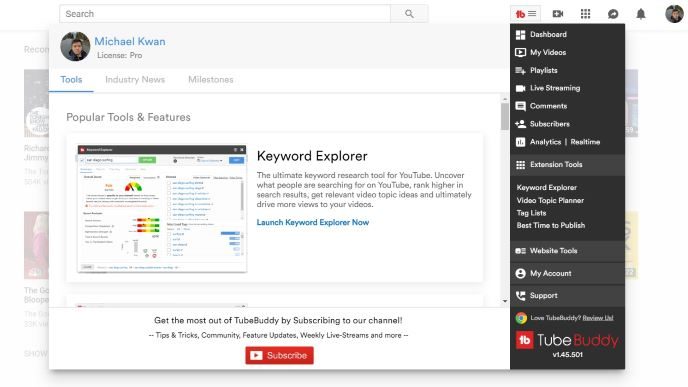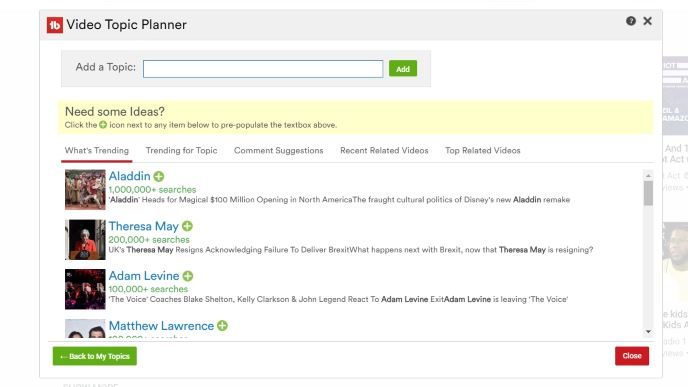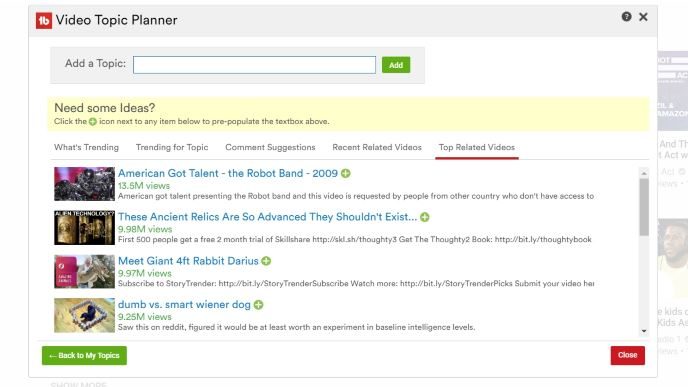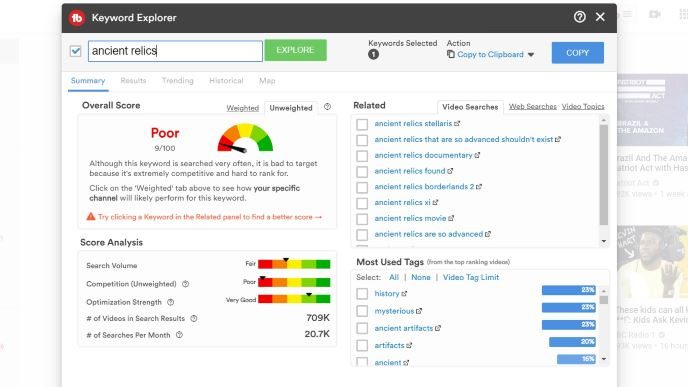One of my favorite YouTubers once proclaimed that the mantra for her channel is, “One for them, one for me.” The philosophy is meant to balance the needs of growing and maintaining a successful YouTube presence, while simultaneously keeping it fun and engaging for her. Focusing solely on what “they” want is a fast path to burnout, but focusing exclusively on your own “artistic expression” isn’t exactly the path to success to either. You need both.
In the context of content creation, particularly as it pertains to YouTube, this means that you need to pay attention to SEO for discoverability. You still need to appease the algorithm gods if you want your video to be seen. But so many content creators only look at titles and tags after they’ve already made the video; content planning has to involve SEO considerations too.

And for that, you might consider using a tool like TubeBuddy. It integrates right into your core YouTube experience, making it easily accessible whenever you’re in a YouTube kind of mood.
Look for What’s Trending
After you’ve signed up and installed the TubeBuddy extension, you simply click on the button that appears on the YouTube website to bring up the TubeBuddy interface. Along the sidebar, you’ll find all your core navigation. On that list, you’ll find an option for your Video Topic Planner. Here’s where you can keep tabs on all your ideas. Click on the button to create a new topic.

By default, you’ll be shown a number of topics that are currently trending. These are based on the number of user searches; as a result, many of the top trending topics are going to be very topical. As I write this, some top searches include Aladdin, Theresa May and Adam Levine. These topics can be a launching off point for your own videos.

You’ll notice there are several tabs for you to explore here. Comment suggestions are good for following up on videos you’ve already created that have attracted relevant comments. Another good one is Top Related Videos. This shows you some big videos that are already garnering a lot of views. You may not want to compete with them directly, but it could be a good launching off point as well.
Conduct Keyword Research
For example, one of the top related videos when I conducted this test was “These Ancient Relics Are So Advanced They Shouldn’t Exist.” Let’s say that you run an education or history channel, and this is right up your alley. If you click on the green “plus” icon next to the video, you’re then taking to the TubeBuddy Keyword Explorer, which functions similarly to the tag explorer.

Based on the keyword “ancient relics,” I’m shown an overall score of 9/100, or Poor. The search volume is okay and the optimization strength is very good, but the competition makes this hard and, really, it’s not nearly specific enough. We need to dig deeper to find a suitable YouTube video topic. Looking to the right, you’ll find related video searches. One of the top ones there is “ancient relics stellaris.”

Clicking on that yields a much more promising result. The overall score is 42/100 or Good. Even though the search volume isn’t huge, TubeBuddy says there is enough to “make it a fair keyword to target.” There isn’t much competition and the optimization strength is excellent too. Maybe this is a topic worth exploring further, or it might turn out to be an irrelevant dead end. (It’s actually the name of a sci-fi strategy game.)
But the point is that going through this process is how you can uncover some potentially awesome ideas for YouTube videos. Do you have a YouTube channel? What sort of topics do you cover?
